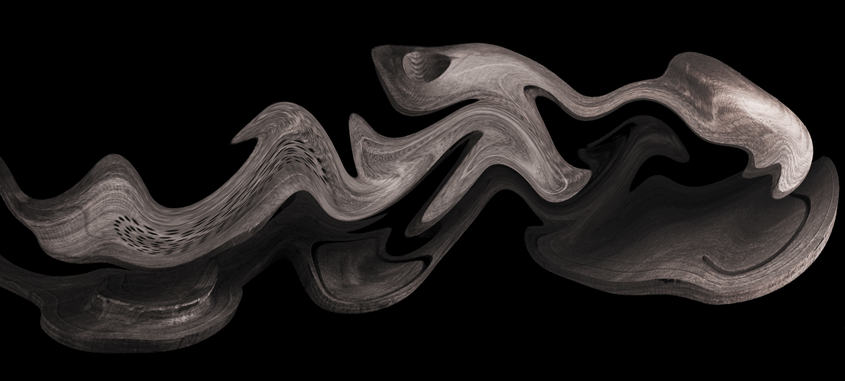May 25–November 25, 2018
Sestiere Castello
Giardini della Biennale
Venice
Italy
CENTRALA - Małgorzata Kuciewicz, Simone De Iacobis
in collaboration with Iza Tarasewicz and Jacek Damięcki
Curator: Anna Ptak
Amplifying Nature is a concept proposed—by the eponymous project presented in the Polish Pavilion—to reconstruct the planetary imagination of architecture. The causal aspect of nature, the material basis of biological existence, has been removed from the view of construction for living, working and resting. The Amplifying Nature project stands for the opposite: the transcorporeality of architecture, meaning that processes involved in the reproduction of the planet as we know it mediate the social routines in the form of buildings we inhabit. The universe speaks to us in the language of architecture.
Members of Warsaw-based CENTRALA architecture studio have analysed the phenomena of gravity, light oscillation and water circulation in modernist projects created in socialist Poland on the verge of Great Acceleration with an empathy for and understanding of the Earth’s workings. They have also designed two new ones, taking the natural processes hinging on the phenomena—rain and circadian rhythms—as actual matter of architecture. This proposal, which acknowledges that geological and life-sustaining metabolism of the planet are changed by humans in general, points to the local and particular modes of imagining and constructing the collective life.
The exhibition can be approached on three levels. It presents the research on selected 1954–1976 works by affiliates of the Art and Research Unit at the Academy of Fine Arts in Warsaw, also these who became known for their later individual practices: Team 10’s Oskar and Zofia Hansen, and visionary Jacek Damięcki. It premieres the new sculptural interpretation of these taken-for-granted processes undergirding both the planet and architecture. In this venture, CENTRALA collaborates with sculptor Iza Tarasewicz to create the affective and materially responsive environment of the exhibition. It also proposes the concept of “amplifying nature,” capturing this dynamic in various scales and a collection of research materials and interdisciplinary conversations in the book Amplifying Nature. The Planetary Imagination of Architecture in the Anthropocene, edited by Anna Ptak.
During the preview days in Venice Polish Pavilion will host a conversation between the authors of the two books accompanying the works by CENTRALA in the Polish Pavilion and DESIGN EARTH in the US Pavilion at the Architecture Biennale in Venice. How do we make sense of the Earth at a moment in which it is presented in crisis? Geostories is a manifesto for the environmental imagination that renders sensible the issues of climate change and through geographic fiction invites readers to relate to the complexity of Earth systems in their vast scales of time and space. Amplifying Nature takes off from five spatialised locally design assemblies to propose a reconfiguration of the narrative on nature-in-architecture and architecture-in-nature. In their optics the planetary scale—the Earth as geological/pluriversal system supporting life as we know it—is indispensable to go on with architectural thinking.
Geostories: Another Architecture for the Environment
DESIGN EARTH (Rania Ghosn and El Hadi Jazairy)
Published by Actar, 2018, 232 pages
Amplifying Nature. The Planetary Imagination of Architecture in the Anthropocene
Edited by Anna Ptak, designed by Krzysztof Pyda
Published by Zachęta – National Gallery of Art, 2018, 184 pages
The dialogue will be facilitated by James Graham, editor of Climates. Architecture and Planetary Imaginary, Avery Books 2018, Director of Publications and Adjunct Assistant Professor at Columbia GSAPP. DESIGN EARTH is an architectural practice founded in 2010 by Rania Ghosn and El Hadi Jazairy. Through architectural drawings, exhibitions, and publications, DESIGN EARTH investigates aesthetic forms of environmental engagement and visualises how urban systems change the Earth. CENTRALA is architecture collective, currently comprising Małgorzata Kuciewicz and Simone De Iacobis, pursuing an agenda of independent research, reinterpretation, and interventions aimed at renewing the understanding of spatial complexity conveyed by architecture, especially that of post-war socialist modernism.
Polish Pavilion commissioner: Hanna Wróblewska
Deputy commissioner: Joanna Waśko
Organised by Zachęta – National Gallery of Art, Warsaw
Polish participation at the 16th Venice Architecture Biennale was made possible through the financial support of the Ministry of Culture and National Heritage of the Republic of Poland.
Additional promotion activities supported by Adam Mickiewicz Institute/Culture.pl



